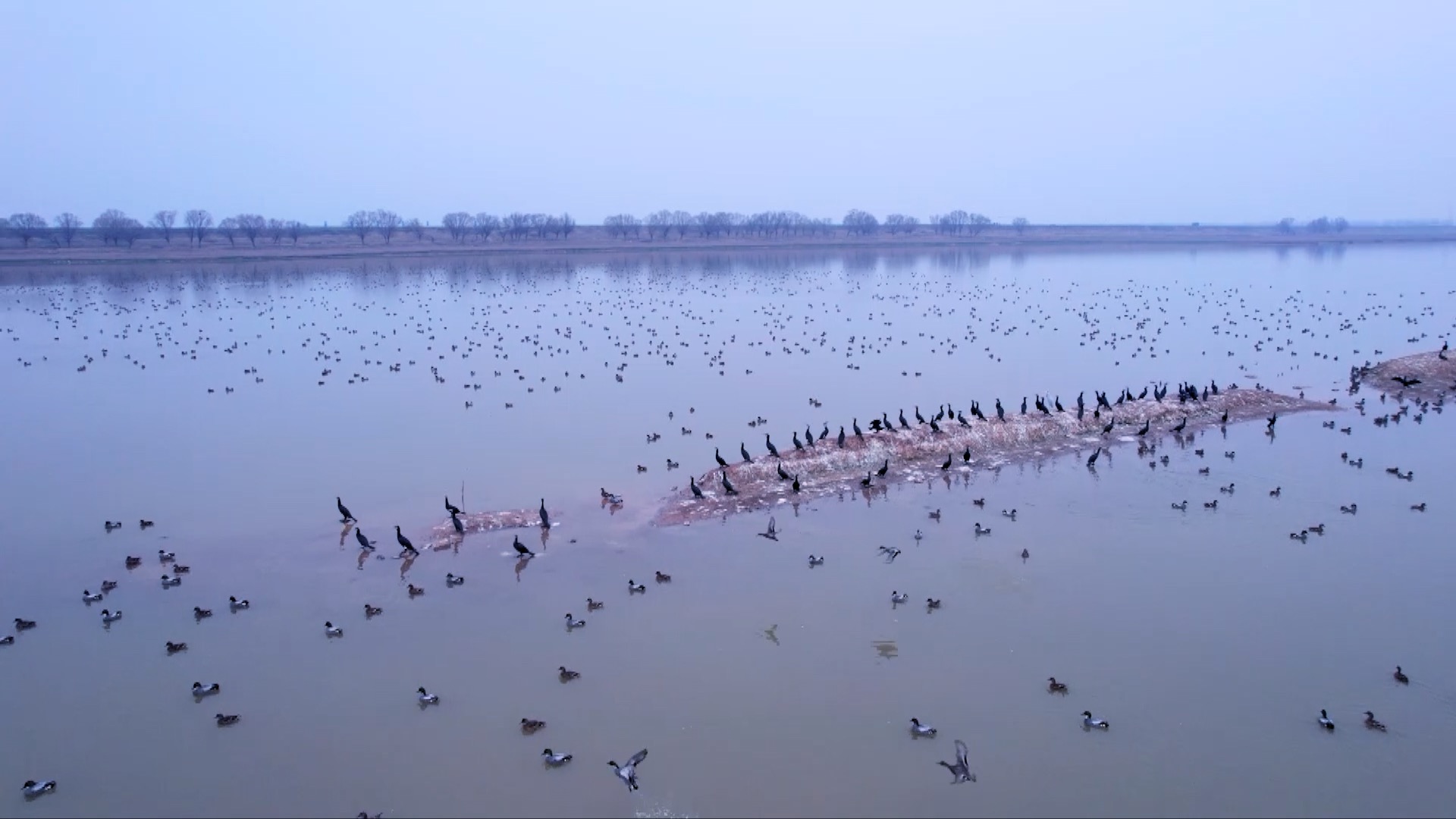March 3 is World Wildlife Day. It aims to celebrate all the world's wild animals and plants and the contribution that they make to our lives and the health of the planet.
This date was chosen as it is the birthday of CITES (Convention on International Trade in Endangered Species of Wild Fauna and Flora). World Wildlife Day in 2023 is also a celebration of CITES as it turns 50.
CITES is an agreement that regulates the movement across international borders of certain species of wild animals and plants. Currently, there are 184 parties to the convention. Over 38,700 species – including roughly 5,950 species of animals and 32,800 species of plants – are protected by CITES. The species affected include marine species, trees, amphibians, turtles and tortoises, birds, fish, and orchids. These are species with highly critical roles in the ecosystems they inhabit, in the daily lives of all humans, and in international commerce.

World Wildlife Day. /Designed by CGTN's Liu Shaozhen
World Wildlife Day. /Designed by CGTN's Liu Shaozhen
To honor the work CITES does and the collaborative work for conservation that is going on globally, the theme for World Wildlife Day this year is "Partnerships for Wildlife Conservation." The "partnership" here covers all conservation efforts, from local to intergovernmental. By the joint efforts of the parties to the convention, sustainability of many endangered species have been ensured in the past decades.
China is home to thousands of wild animals and plants. China has continued to strengthen the protection of rare and endangered wild animals and plants and their habitats, with 74 percent of key national wild animals and plants under protection. After years of constant protection, a large number of populations of rare and endangered wild animals and plants have achieved recovery growth.
00:46

International cooperation to restoration of tigers and leopards
In 2019, China's Northeast Tiger and Leopard National Park signed a three-year cooperative action plan with a national park in Russia to beef up cooperation in the protection of Siberian tigers and Amur leopards. Both feline animals live along the border between China and Russia, making it necessary for the two countries to work together to better protect them.
In November 2022, experts and scholars from China and Russia attended an online meeting held in Hunchun City, northeast China's Jilin Province. In view of protecting wild tigers and leopards, experts from the two countries agreed to strengthen scientific and technological cooperation.
According to the latest survey, the population of Siberian tigers and Amur leopards in northeast China's Jilin Province, has increased to around 50 and 60, respectively, from 27 and 42 in 2017.
05:17

Conservation of once-declining Yangtze finless porpoise
The Yangtze finless porpoise is a national first-class protected animal. During the investigation of the Yangtze finless porpoise in 2022, the scientific research team was heartened that they found 99 pairs of mother and child Yangtze finless porpoise in the Yangtze River main stream.
Yangtze finless porpoise was once widely distributed in the middle and lower reaches of the Yangtze River as well as the Dongting Lake and the Poyang Lake. Over the past period of time, the population of Yangtze finless porpoise has been declining due to the impact of high intensity human activities.
China attaches great importance to the conservation of Yangtze finless porpoise. Since the 1980s, China has gradually explored three major conservation strategies: in-situ conservation, relocation conservation and artificial breeding. Among them, in-situ conservation, i.e. choosing some waters with similar ecological environment as Yangtze River to establish in-situ conservation sites, is the most direct and effective measure to protect it. So far, five relocation reserves have been established in China, with a total population of over 150 individuals.
00:53

Protection of the homes of the migratory birds
The bird's spring migration, one of nature's greatest journeys, is coming. And the wildlife protection department of China's National Forestry and Grassland Administration held a meeting on Tuesday to strengthen the protection on these traveling birds.
There are 804 kinds of migratory species currently recorded in China, accounting for 55.6 percent of the total bird species in China. The administration has issued an action plan for 2021-2035, designating 1,140 places as important for the breeding, wintering and stopping over of migratory birds. The meeting stressed the duties of all relevant departments and rangers, and pointed out they should cooperate with local NGOs, birdwatching lovers and volunteers to make sure the birds have safe journeys.
There are nine major migratory routes in the world, four of which pass through China. At the 14th Meeting of the Conference of the Contracting Parties to the Ramsar Convention on Wetlands (COP14), China announced that it will promote international exchanges and cooperation to better protect these flyways passing through China.
According to COP14, the number of black-faced spoonbills, which are under China's national first-class protection, has increased from 300 in the 1980s to around 6,000 today. Since the 1990s, the number of black-necked cranes has grown from 5,000 to 15,000, and the number of oriental white storks from 3,000 to nearly 10,000.
01:21

Conservation of rare plants
During the Quaternary glaciation, the dove tree disappeared from most regions of China. However, some of them survived in central China thanks to the complex landform and mountains. Now, the dove tree mainly grows in central and southwest China and is under first-class state protection in China.
As many dove tree reserves have been set up across the country, many wild populations of dove trees are effectively protected. In addition, in order to protect its genetic diversity, China has introduced and cultivated it on a large scale since the 1970s and developed adaptive domestication of it to both hot and dry climates.
At present, there are 455 wild plant species under China's national key protection, including 54 species under first-class protection and 401 species under second-class protection.
(The third video provided by Yueyang Television: Migratory birds at the wetlands of Dongting Lake, a major stop on the path of migratory birds in Hunan Province, central China.)
(If you want to contribute and have specific expertise, please contact us at nature@cgtn.com)